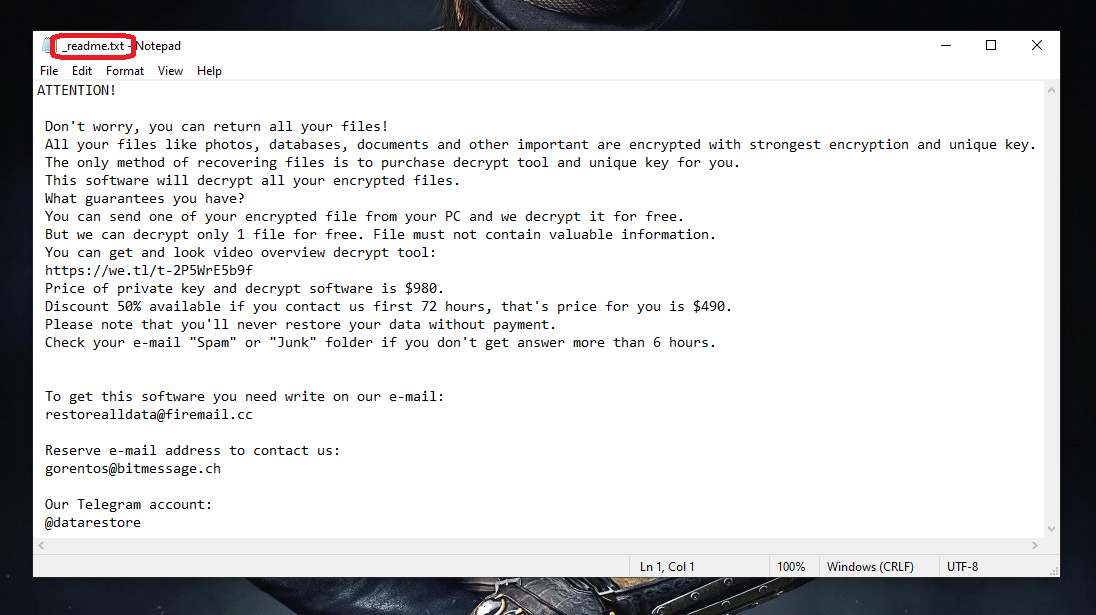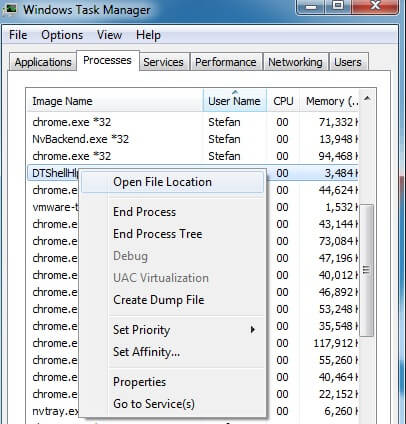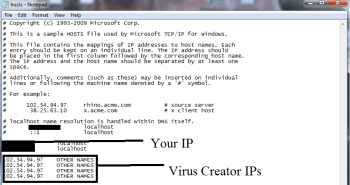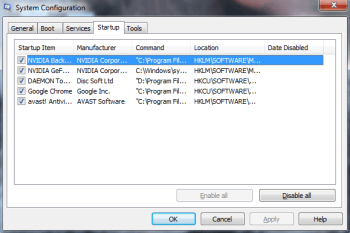Edfc
Edfc is a ransomware virus intended to restrict access to user data through encryption and request a cryptocurrency payment in exchange for decrypting it. The victims of Edfc will be notified about the attack with the help of a ransom-demanding message on their screen.

Most of the victims of ransomware viruses don’t initially realize that their system has been attacked and it is only when the targeted files become inaccessible that the user finds out about the attack on their computer. That is probably your case and the current ransomware infection you are facing most likely goes under the name of Edfc. This threat has already encrypted the files on many computers and a number of users have contacted our “How to remove” team to ask for help. That’s why we’ve published the current article and the removal guide below. With their support, we hope you will be able to remove Edfc and potentially restore some of the files that have been locked by its advanced encryption code.
The Edfc virus
The Edfc virus is a ransomware-based infection created to blackmail web users for money by encrypting their files with a secret encryption code. The Edfc virus can infect anyone, from large corporations to individual web users, and restrict their access to their most valuable digital data.
The complexity of the encryption algorithms that are used to deprive users of access to their own files is the main reason why ransomware threats like Edfc and Lqqw are so dangerous. Sometimes it is beyond even the hackers’ powers to free the data that has been encrypted. Yet, they still promise the victims to recover their files if they pay a ransom. This is the reason why many desperate web users decide to send the required money with the hope that they will regain access to the locked information. However, in many cases, the moment the hackers get the money, they simply vanish or send a file-decryption solution that doesn’t work. This is how many people end up wasting their money without really restoring access to any of the sealed data.
The Edfc file decryption
The Edfc file decryption is a method to recover data from file encryption through the application of a decryption key. The Edfc file decryption key, however, can only be obtained after a ransom is paid to the cybercriminals who keep it.

Sadly, there is absolutely no guarantee that after you pay, you will receive a decryption key from the hackers behind Edfc. This is a good reason not to pay any money to the offenders. Besides, the best way to help kill this terrible blackmailing scheme is to not fund it. The removal of the ransomware from your computer, however, is also important and paying the ransom won’t do that. Moreover, failing to remove the virus could actually cause additional complications. For instance, you won’t be able to save new files or connect other devices, including your personal file backup sources, because they may get encrypted as well.
That’s why our best recommendation is to carefully detect and delete Edfc and all of its traces from the infected device if you want to be able to use it normally. You can do that with the instructions below or by scanning the computer with the professional Edfc removal tool.
SUMMARY:
Edfc Ransomware Removal
![]()
Some of the steps will likely require you to exit the page. Bookmark it for later reference.
Reboot in Safe Mode (use this guide if you don’t know how to do it).
![]()
WARNING! READ CAREFULLY BEFORE PROCEEDING!
Press CTRL + SHIFT + ESC at the same time and go to the Processes Tab. Try to determine which processes are dangerous.

Right click on each of them and select Open File Location. Then scan the files with our free online virus scanner:

After you open their folder, end the processes that are infected, then delete their folders.
Note: If you are sure something is part of the infection – delete it, even if the scanner doesn’t flag it. No anti-virus program can detect all infections.
![]()
Hold the Start Key and R – copy + paste the following and click OK:
notepad %windir%/system32/Drivers/etc/hosts
A new file will open. If you are hacked, there will be a bunch of other IPs connected to you at the bottom. Look at the image below:

If there are suspicious IPs below “Localhost” – write to us in the comments.
Type msconfig in the search field and hit enter. A window will pop-up:

Go in Startup —> Uncheck entries that have “Unknown” as Manufacturer.
- Please note that ransomware may even include a fake Manufacturer name to its process. Make sure you check out every process here is legitimate.
![]()
Type Regedit in the windows search field and press Enter. Once inside, press CTRL and F together and type the virus’s Name.
Search for the ransomware in your registries and delete the entries. Be extremely careful – you can damage your system if you delete entries not related to the ransomware.
Type each of the following in the Windows Search Field:
- %AppData%
- %LocalAppData%
- %ProgramData%
- %WinDir%
- %Temp%
Delete everything in Temp. The rest just check out for anything recently added. Remember to leave us a comment if you run into any trouble!
![]()
How to Decrypt Edfc files
We have a comprehensive (and daily updated) guide on how to decrypt your files. Check it out here.
If the guide doesn’t help, download the anti-virus program we recommended or try our free online virus scanner. Also, you can always ask us in the comments for help!

Leave a Reply